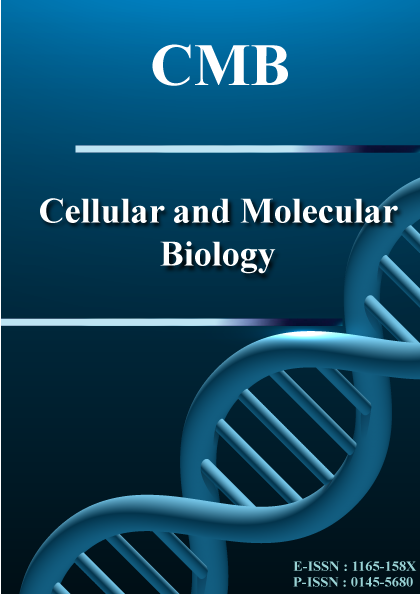Issue
Copyright (c) 2025 Juma Al-Mutaani, Lazhar Zourgui, Nabiha Missaoui

This work is licensed under a Creative Commons Attribution-NonCommercial-NoDerivatives 4.0 International License.
The undersigned hereby assign all rights, included but not limited to copyright, for this manuscript to CMB Association upon its submission for consideration to publication on Cellular and Molecular Biology. The rights assigned include, but are not limited to, the sole and exclusive rights to license, sell, subsequently assign, derive, distribute, display and reproduce this manuscript, in whole or in part, in any format, electronic or otherwise, including those in existence at the time this agreement was signed. The authors hereby warrant that they have not granted or assigned, and shall not grant or assign, the aforementioned rights to any other person, firm, organization, or other entity. All rights are automatically restored to authors if this manuscript is not accepted for publication.Phytochemicals, bioactive compounds, and antimicrobial activities of Ocimum basilicum, Teucrium polium, Cleome amblyocarpa, and Caralluma arabica extracts: a comparative Omani study
Corresponding Author(s) : Nabiha Missaoui
Cellular and Molecular Biology,
Vol. 71 No. 3: Issue 3
Abstract
The study aims to identify and quantify the phytochemical components of Ocimum basilicum, Teucrium polium, Cleome amblyocarpa, and Caralluma arabica extracts and to evaluate the antimicrobial activities of these Omani plants. The total phenolic content, flavonoid content, and tannin levels were quantified in both water and absolute ethanol extracts. The bioactive compounds present in the aerial parts of these plants were identified and characterized using liquid chromatography coupled with electrospray ionization mass. The antimicrobial properties were explored via the agar diffusion approach. The absolute ethanol extracts demonstrated higher phytochemical content compared to the water extracts for all plants. Ocimum basilicum revealed the highest quantities of total phenolic acids and flavonoids, followed by Teucrium polium, Cleome amblyocarpa, and Caralluma arabica. Quinic acid was detected in substantial quantities across all extracts, while three flavonoid compounds—1,3-di-O-caffeoylquinic acid, acacetin, and naringenin—were identified in all extracts, albeit in varying concentrations. Furthermore, the ethanolic extracts exhibited potent antimicrobial activity on the tested bacterial and fungal species. Staphylococcus aureus showed the highest sensitivity to Caralluma arabica extracts (22±0.1 mm). Staphylococcus aureus and Escherichia coli were the most vulnerable strains to Ocimum basilicum extracts (21±0.2 mm and 20±0.2 mm, respectively). Ocimum basilicum extracts demonstrated the best minimum inhibitory concentration (MIC: 1.28 mg/ml against Staphylococcus aureus and Salmonella enteritidis) and minimum bactericidal concentration (33.5 mg/ml against Salmonella enteritidis). Additionally, the Teucrium polium extract exhibited the lowest MIC (3.25 mg/ml) and minimum fungicidal concentration (17.28 mg/ml) against Fusarium spp. In conclusion, the aerial parts of Ocimum basilicum and Teucrium polium were rich in bioactive compounds, exhibited strong antimicrobial activity, and hold great potential for ethnomedicinal applications, warranting further investigation.
Keywords
Download Citation
Endnote/Zotero/Mendeley (RIS)BibTeX




